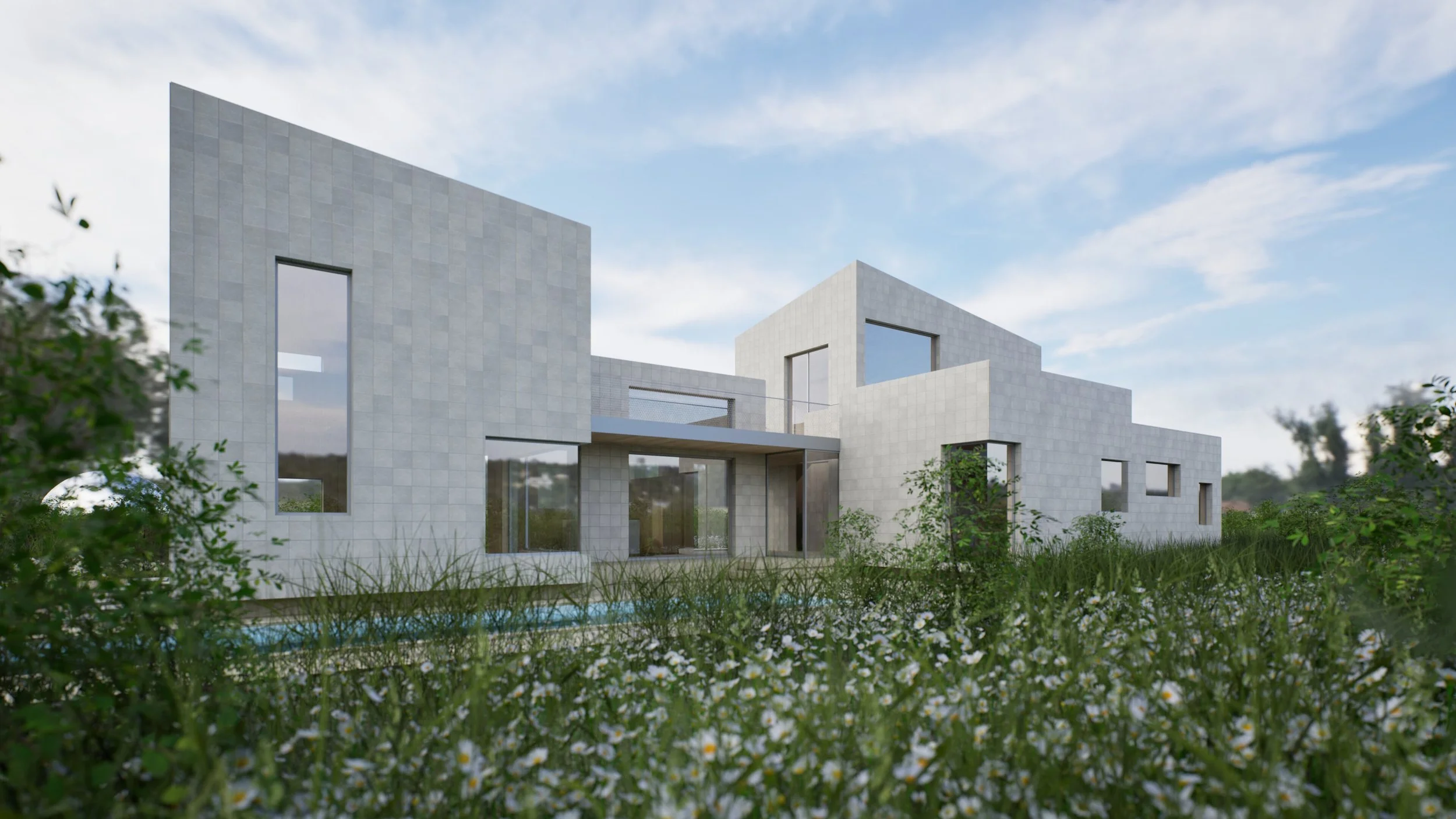Case Study 2.0 - Pavilion House
Single Family Residence
The Case Study 2.0 is an Initiative to help victims of the Palisades fire with design for homes that prioritize fire resilience, affordability, sustainability and adaptability to allow victims to rebuild quickly and sustainably. Our design for the program reimagines the single-family home as a collection of carefully crafted, room-sized volumes or “pavilions” linked together beneath a low, connecting roof. Inspired by the spirit of the Case Study House program, the project embraces innovation in both design and construction while seeking new architectural models for contemporary living that are efficient, adaptable, and responsive to climate and context.
In the Pavilion house each volume functions as an independent module, allowing for variation in ceiling height, natural light, and window placement to suit its specific use: tall and open for shared living spaces, compact and quiet for bedrooms, or softly illuminated for studios and retreats. Because each volume is structurally self-supporting, the layout is inherently flexible — it can adapt to different sites, evolve over time, or expand as your needs change.
At the heart of the design approach is mass timber, specifically cross-laminated timber (CLT), which serves as the structure for the walls and roof simplifying the structure by eliminating internal or seconary structural elements. The wood material creates warm, expressive spaces that can be exposed also as a finish surface saving on both cost and material use. Each CLT panel is prefabricated offsite with integrated insulation, waterproofing, and window openings, then delivered and craned into place. This streamlined “kit-of-parts” construction method allows for faster, cleaner installation with minimal disruption and waste. The result is a modular architecture that balances standardization with customization — adjusting easily to orientation, site conditions, or personal preferences without compromising the integrity of the design.
Sustainability is woven into every aspect of the project — from materials to energy systems to long-term performance. CLT offers a renewable, low-carbon alternative to concrete and steel, and the envelope is detailed to Passive House standards, minimizing thermal bridging and maximizing airtightness. Generous openings and shaded breezeways promote passive cooling and cross-ventilation, reducing reliance on mechanical systems. There is an ability to add Integrated rooftop PV systems to achieve net-zero energy use.
The home is designed with a comprehensive fire-resistance strategy that includes non-combustible exterior materials, sealed and fire-rated roof assemblies, and ember-resistant ventilation systems with automatic shutoffs. Flat “blue roofs” across several volumes retain shallow pools of water that cool the structure, resist ember ignition, and provide an emergency fire-suppression reservoir. Open eaves are eliminated in favor of clean-edged parapets and fully boxed-in roof forms that mitigate fire risks.
The home is designed to be cost-competitive with conventional construction. Prefabricated CLT construction ensures dimensional accuracy, minimal waste, and fast installation. This approach achieve cost and time savings compared to traditional stick-built homes, without compromising on quality, beauty, or performance.






